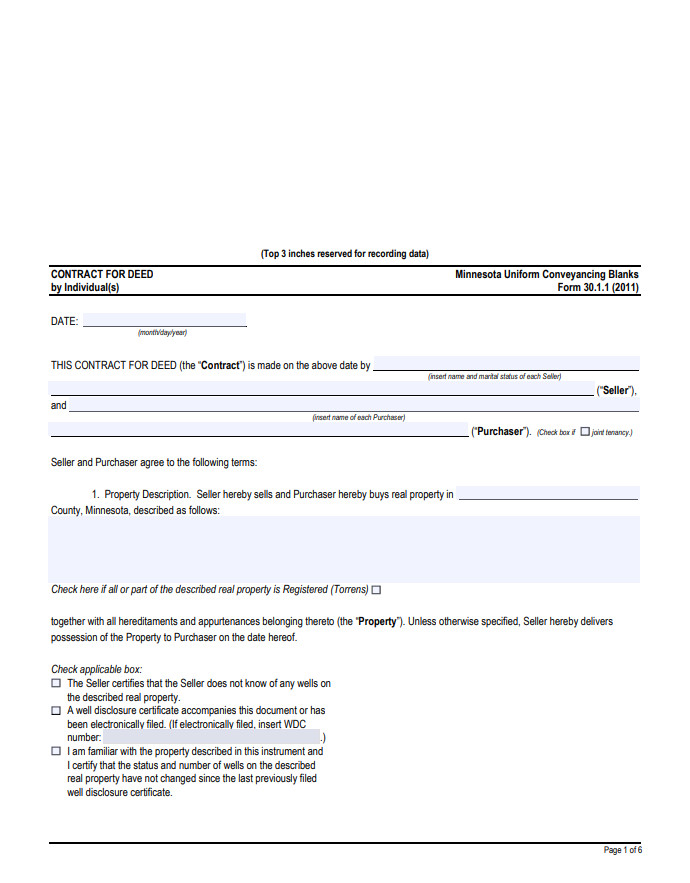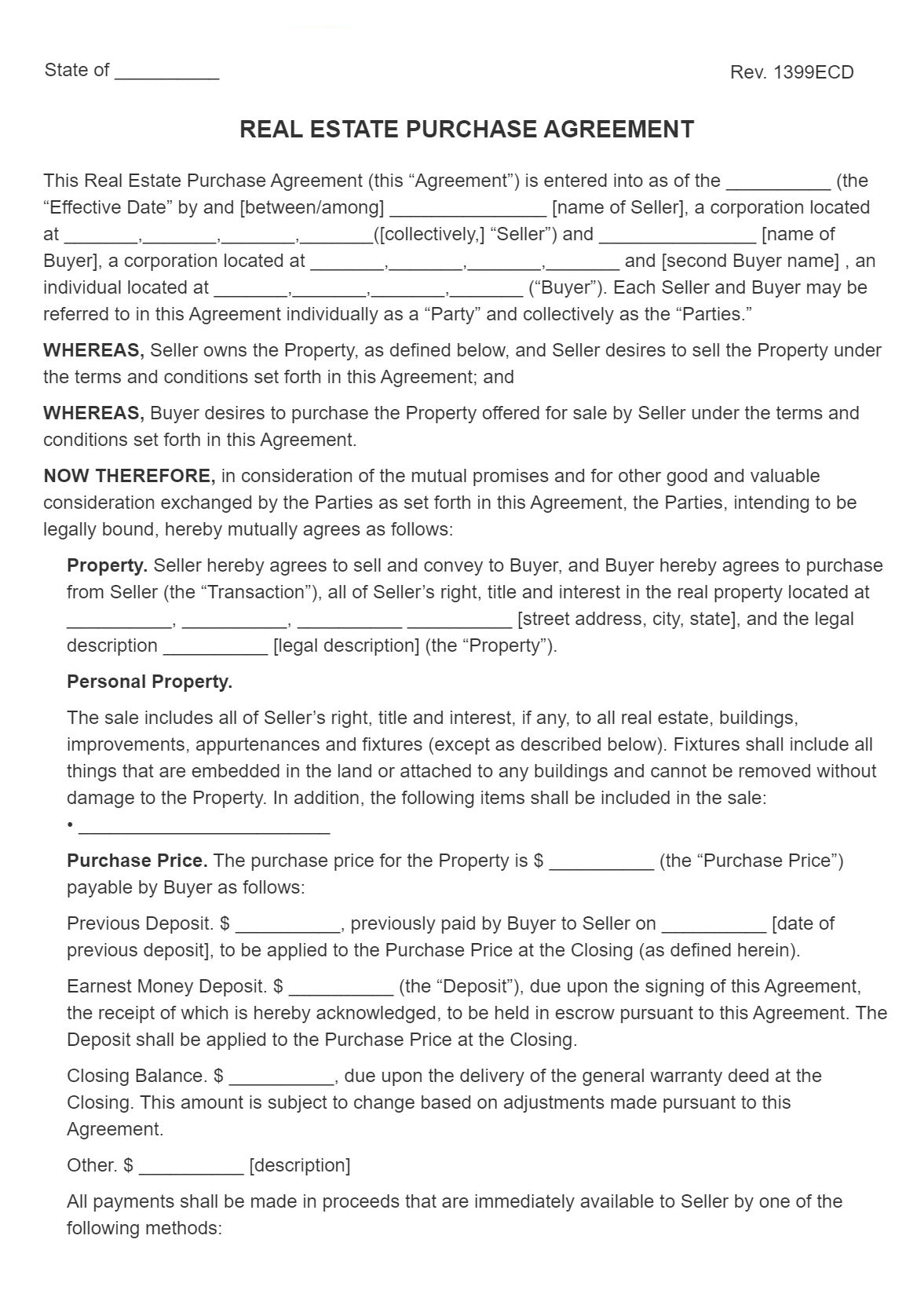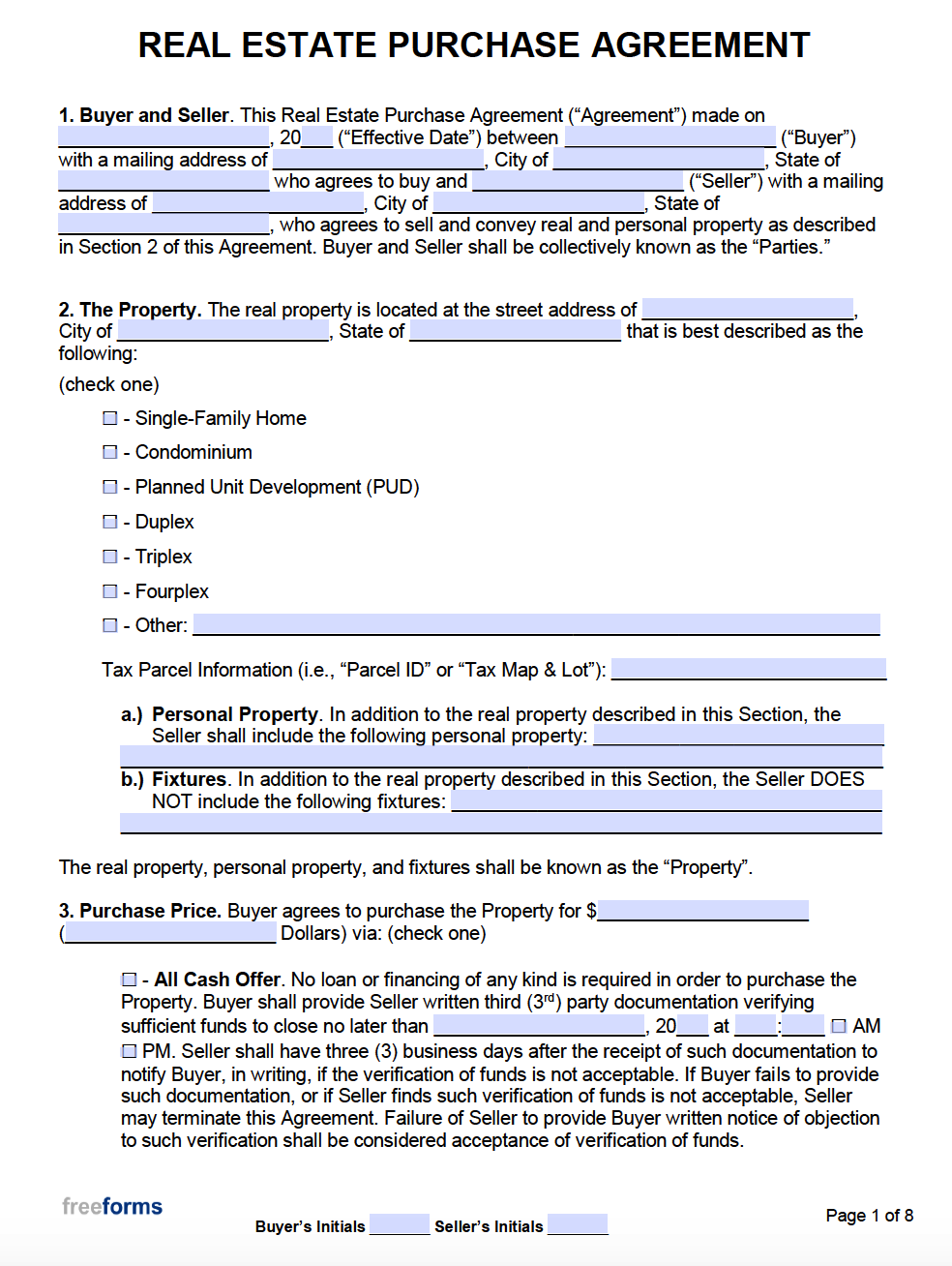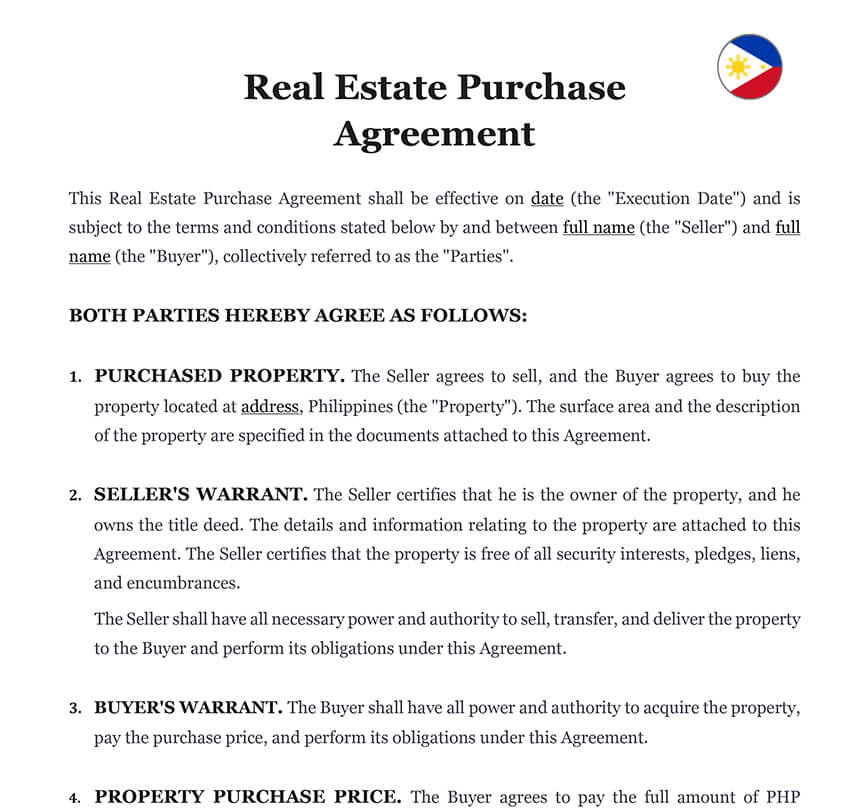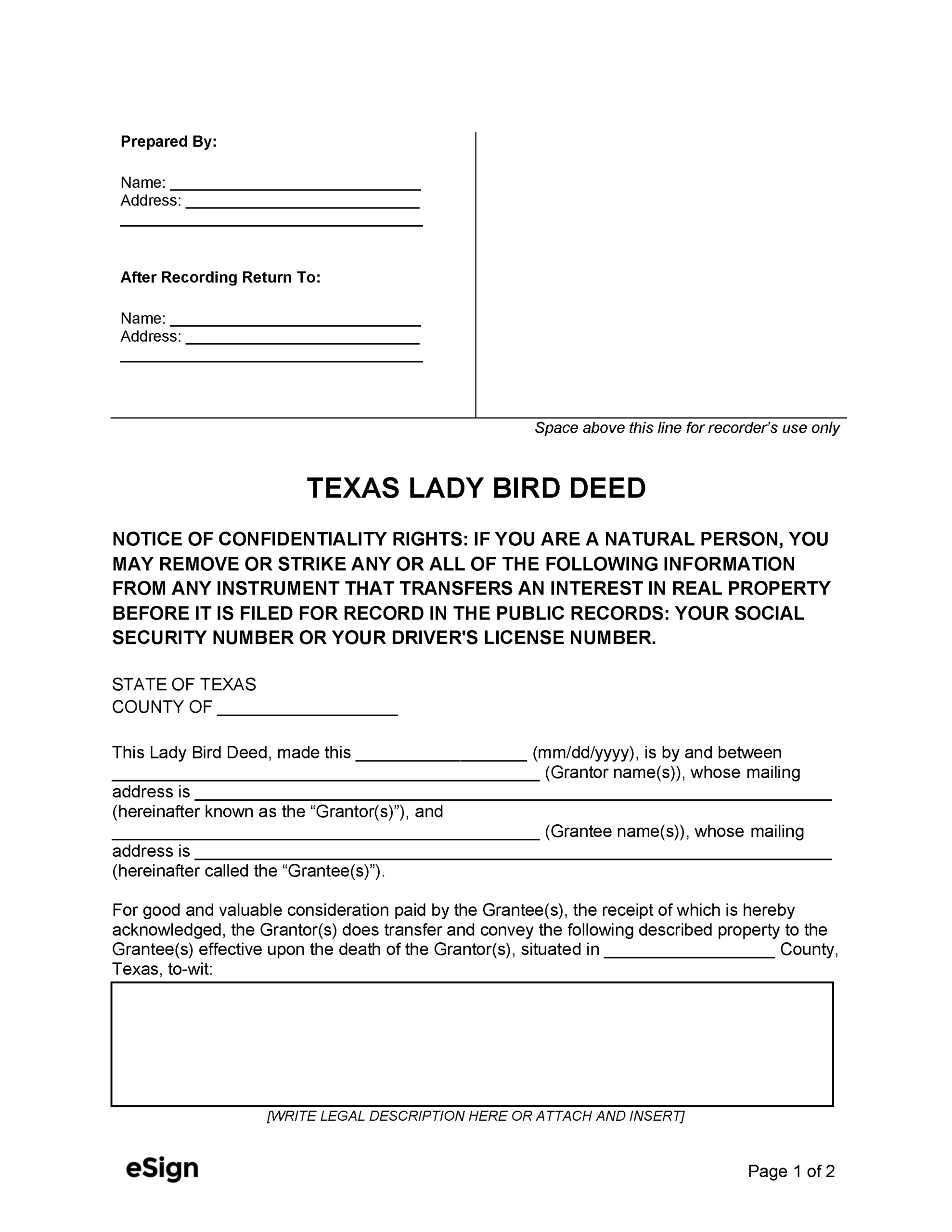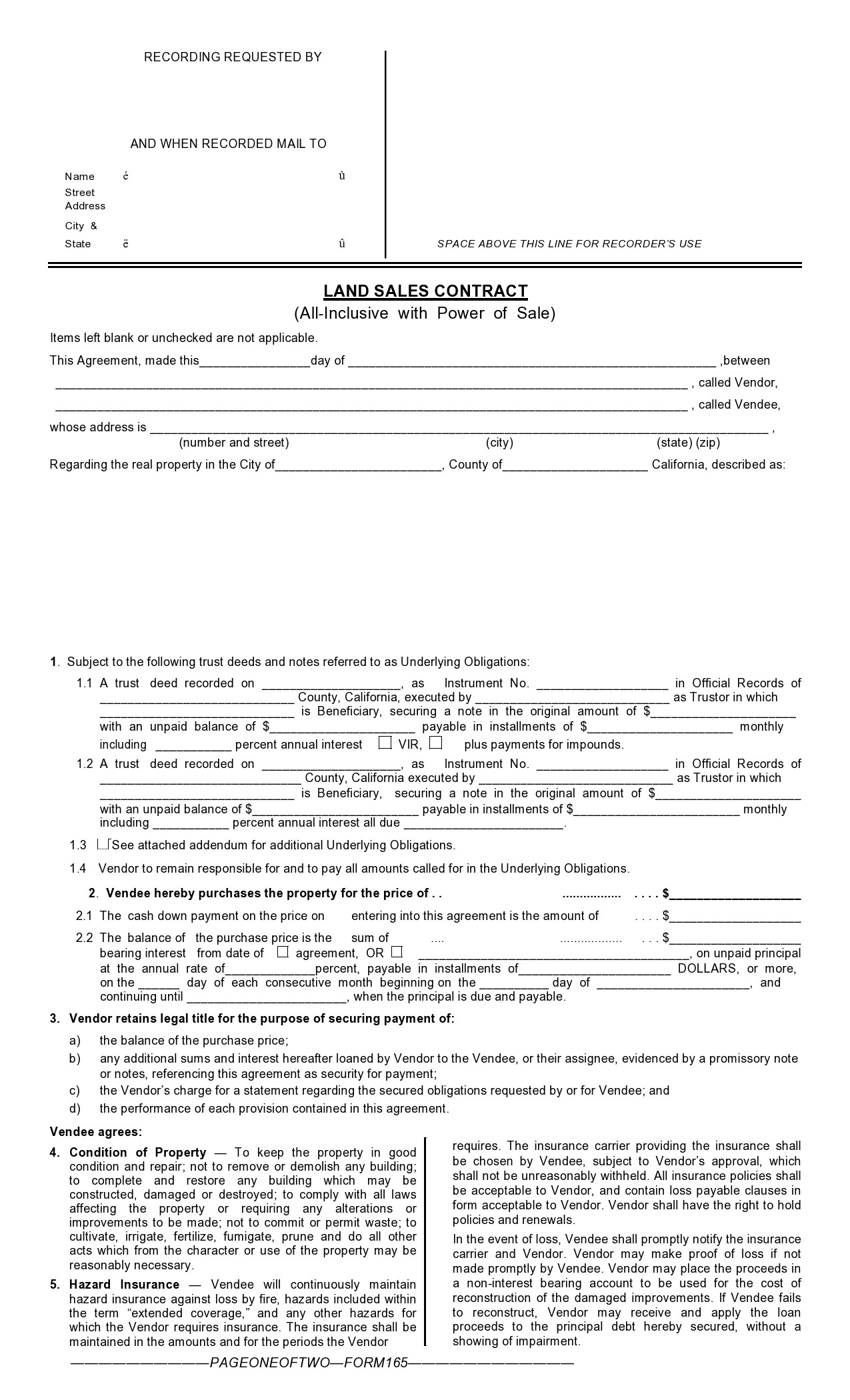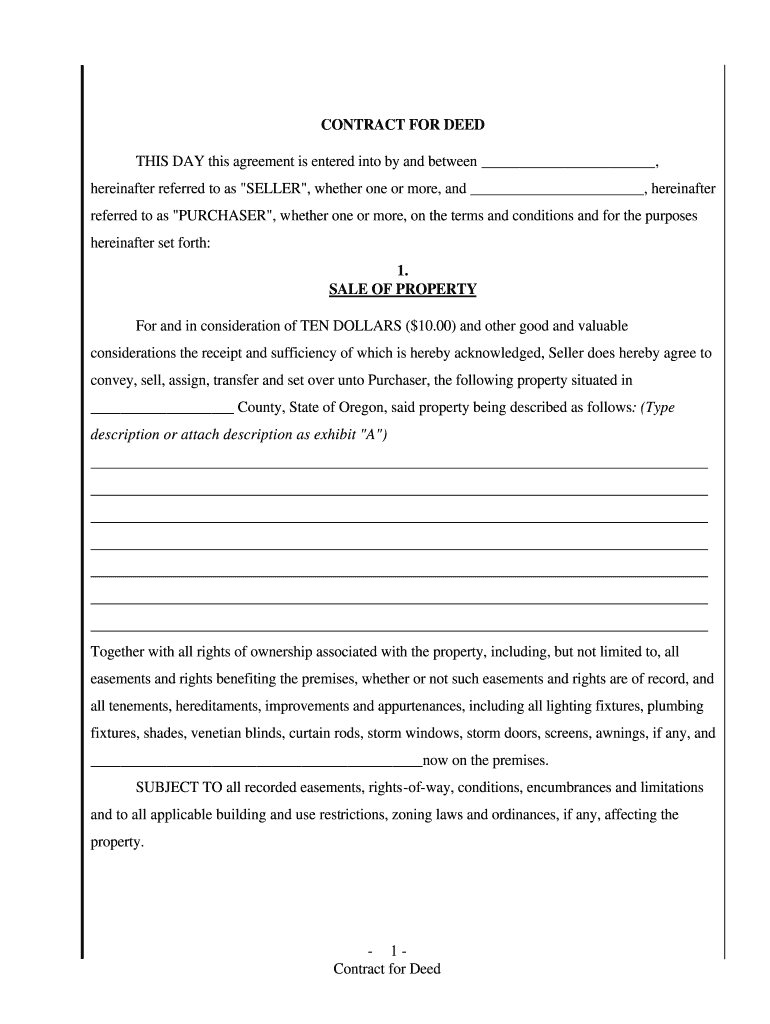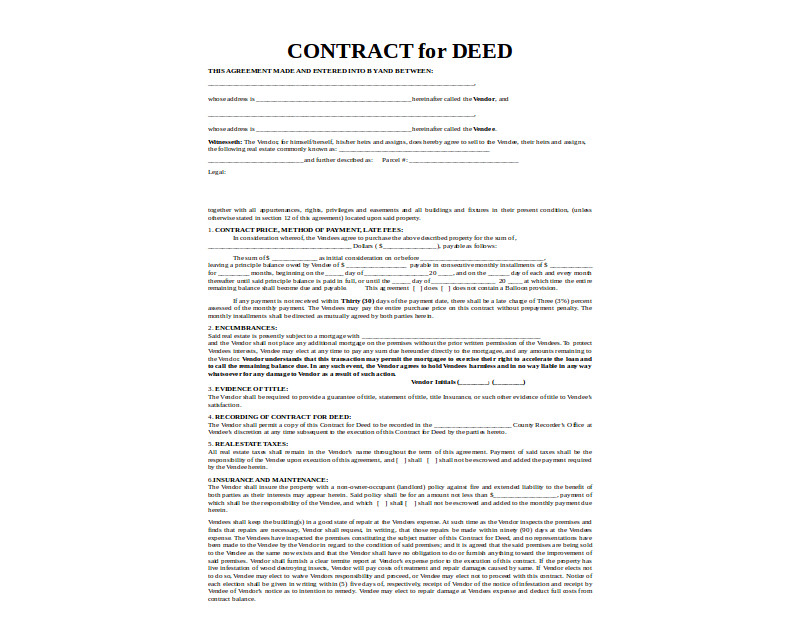Are you looking for a way to buy or sell a property without involving a traditional mortgage lender? A contract for deed might be the solution you’re seeking. This legal document allows the transfer of ownership of a property from the seller to the buyer, with the buyer making payments directly to the seller over time.
In this comprehensive guide, we will explore everything you need to know about the contract for deed, including what it is, why it’s used, how to create one, examples, and tips for successful implementation.
What is a Contract for Deed?
A contract for deed, also known as a land contract or agreement for deed, is a legal document used in real estate transactions where the seller finances the purchase of the property for the buyer.
Instead of obtaining a traditional mortgage from a bank, the buyer makes payments directly to the seller until the full purchase price is paid off. Once the final payment is made, the seller transfers the deed to the buyer, making them the official owner of the property.
Why Use a Contract for Deed?
There are several reasons why buyers and sellers may choose to use a contract for deed instead of a traditional mortgage:
- Flexible Terms: Contract for deed agreements allow for more flexibility in terms compared to traditional mortgages, making it easier for buyers and sellers to negotiate.
- No Bank Involvement: Since the seller finances the purchase, there is no need for the buyer to involve a bank or meet stringent loan requirements.
- Quick Closing: Contract for deed transactions typically close faster than traditional mortgage deals, allowing for a quicker transfer of ownership.
- Access to Properties: Buyers who may not qualify for a traditional mortgage can still access properties through contract for deed agreements.
Contract for Deed: How to Create One
Creating a contract for deed involves several steps to ensure that all parties are protected and understand the terms of the agreement. Here’s a general overview of how to create a contract for deed:
- Identify the Parties: Include the legal names and addresses of both the buyer and the seller.
- Property Description: Provide a detailed description of the property being sold, including address, legal description, and any additional features.
- Terms of Sale: Outline the purchase price, down payment amount, interest rate, payment schedule, and any other financial terms agreed upon by both parties.
- Duration of Agreement: Specify the length of the contract, including the start and end date of the agreement.
- Conditions of Default: Include provisions for what happens in case of default by either party, such as late payments or breach of contract.
- Signatures: Both parties must sign and date the contract in the presence of a notary public to make it legally binding.
Examples of Contract for Deed
To better understand how a contract for deed works in practice, here are a couple of examples:
Tips for a Successful Contract for Deed
When entering into a contract for deed agreement, consider the following tips to ensure a smooth and successful transaction:
- Get Legal Advice: Consult with a real estate attorney to review the contract and ensure that all terms are legally sound.
- Perform Due Diligence: Conduct a title search and property inspection to verify ownership and condition of the property before signing the agreement.
- Clarify Terms: Clearly define all terms of the agreement, including payment schedule, interest rate, and conditions of default, to avoid misunderstandings later on.
- Keep Records: Maintain detailed records of all payments made and communicate regularly with the other party to prevent any disputes.
In conclusion, a contract for deed can be a viable alternative to traditional mortgages for buyers and sellers looking for flexibility and convenience in real estate transactions. By understanding what it is, why it’s used, how to create one, examples, and tips for successful implementation, you can confidently navigate the process and achieve your real estate goals.
Contract For Deed Template – Download
